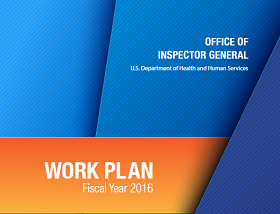The goal of a well-managed radiology billing operation is to submit claims for services promptly and receive reimbursement as quickly as possible. Timely submission and prompt payment enhance the practice’s cash flow and keep the overall cost of billing at a minimum. All too often, however, payment is delayed because the payer denies the claim for some reason.
Categories: radiology reimbursement, radiology documentation, denial management, radiology charge capture
Reimbursement Benefits of Structured Radiology Reporting on May 23, 2016
Along with the entire healthcare industry in America, radiology is increasingly being asked to standardize its methods of practice. Radiologists’ reports have traditionally been free-text documents in formats that vary from physician to physician, even within group practices. This individual style of reporting has become the radiologist’s personal signature on the work he or she has done with each patient exam but it does not lend itself to meeting modern requirements.
Categories: radiology reimbursement, radiology documentation, reporting
What Radiology Practices Need to Know About the 2016 OIG Work Plan on February 29, 2016
The Office of the Inspector General (OIG) is charged with auditing federal programs under the Department of Health and Human Services to identify waste, fraud and abuse in order to protect the integrity of these programs and the health and welfare of their beneficiaries. The OIG annually issues it’s Work Plan for the coming year, outlining the programs and specific areas that it will be investigating. Physician services paid by Medicare receive a major share of attention every year from the OIG. In this article, we will describe some of the areas under review in the 2016 Work Plan that will be of interest to radiologists.
Categories: radiology documentation, OIG Work Plan
Documentation Best Practices for Imaging Guidance in Interventional Radiology Procedures on December 8, 2015
In this blog article that continues our series on how to optimize radiology documentation for maximum reimbursement potential, we address the two most important questions specific to imaging guidance in interventional radiology. Imaging guidance is more and more frequently bundled with the primary interventional procedure, especially with the new CPT[i] codes proposed for 2016. It is, however, still separately billable in certain cases. Regardless of whether it is bundled or not, the radiologist’s documentation for the procedure requires certain elements that thoroughly describe the guidance methods and results. Here are the answers to the two most important questions for your radiology practice to consider.
Categories: radiology reimbursement, radiology documentation, interventional radiology, imaging guidance
Documentation Diligence is the Key to Radiology Practice Reimbursement on November 5, 2015
Medicare’s required changeover to ICD-10 diagnosis coding has shed more light than usual on a topic that requires constant diligence by radiology practices. Regardless of the payer being billed, good procedure coding and diagnosis coding are a must – and the source material for that coding is the documentation found in the radiologist’s report of the imaging examination.
Categories: radiology reimbursement, radiology documentation, breast imaging, CT imaging, 3D reconstruction, ultrasound, tomosynthesis, DBT
Preparing Your Radiology Practice for the ICD-10 Transition: Other Documentation Considerations on October 20, 2015
This concludes our series of articles designed to assist radiologists with the task of preparing their reports for maximum compliance with ICD-10-CM reporting to Medicare. By fine-tuning your documentation you will be assured of the best coding and uninterrupted reimbursement under ICD-10. The complete series is available on our blog page, which also contains additional information to help radiology practices with this major change.
Categories: radiology documentation, icd-10
How to Document Abdominal Ultrasounds Properly In Order to Maximize Radiology Practice Reimbursement on October 13, 2015
As with any medical procedure, the performance of abdominal ultrasound examinations is defined by specific practice parameters. Likewise, the documentation of those exams must also comply with certain criteria in order for the practice to realize full reimbursement for them. The accepted guideline1 for the performance of abdominal or retroperitoneal ultrasound exams indicates, “Depending on clinical indications, an examination may include the entirety of the abdomen and/or retroperitoneum, a single organ, or several organs.” Similarly, the documentation must contain an exact description of the procedure for proper billing.
Categories: radiology reimbursement, radiology documentation, ultrasound
Preparing Your Radiology Practice for the ICD-10 Transition - Documentation for Neoplasms on October 8, 2015
Healthcare Administrative Partners continues our efforts to help radiology practices make a successful transition to ICD-10 with this article, the third in our series focusing on how radiologists can fine-tune their documentation to assure the best coding and uninterrupted reimbursement. Our previous articles covered Documentation for Pain and Documentation for Fractures and our blog contains additional information to help radiology practices prepare for this major change.
Categories: radiology reimbursement, radiology documentation, icd-10
Preparing Your Radiology Practice for the ICD-10 Transition - Documentation for Fractures on September 14, 2015
This is the second in our series of articles designed to assist radiologists with the transition to ICD-10-CM, which will be used in place of ICD-9-CM for reporting diagnoses to Medicare beginning on October 1, 2015. Our goal is to help you fine-tune your documentation to assure the best coding and uninterrupted reimbursement under ICD-10. Our first article covered Documentation for Pain and we also previously posted other information to help radiology practices prepare for this major change. A large number of diagnostic imaging exams deal with the assessment of fractures and the documentation of these exams will require some pieces of information that were not always included in radiology reporting until now.
Categories: radiology reimbursement, radiology documentation, icd-10
Preparing Your Radiology Practice for the ICD-10 Transition - How to Document Pain on August 27, 2015
By this time, most people working in healthcare are already aware of the deadline to begin using ICD-10-CM in place of ICD-9-CM for reporting diagnoses to Medicare on October 1, 2015. Healthcare Administrative Partners has previously posted information to help radiology practices prepare, and this new series of articles is designed to help radiologists fine-tune their documentation to assure the best coding and uninterrupted reimbursement under ICD-10. One of the major areas of concern for radiologists is in the description of pain for proper diagnosis coding. A survey of historical coding by radiology practices showed that 17 of the 100 most commonly used ICD-9 diagnoses were related to pain.
Categories: radiology reimbursement, radiology documentation, icd-10













